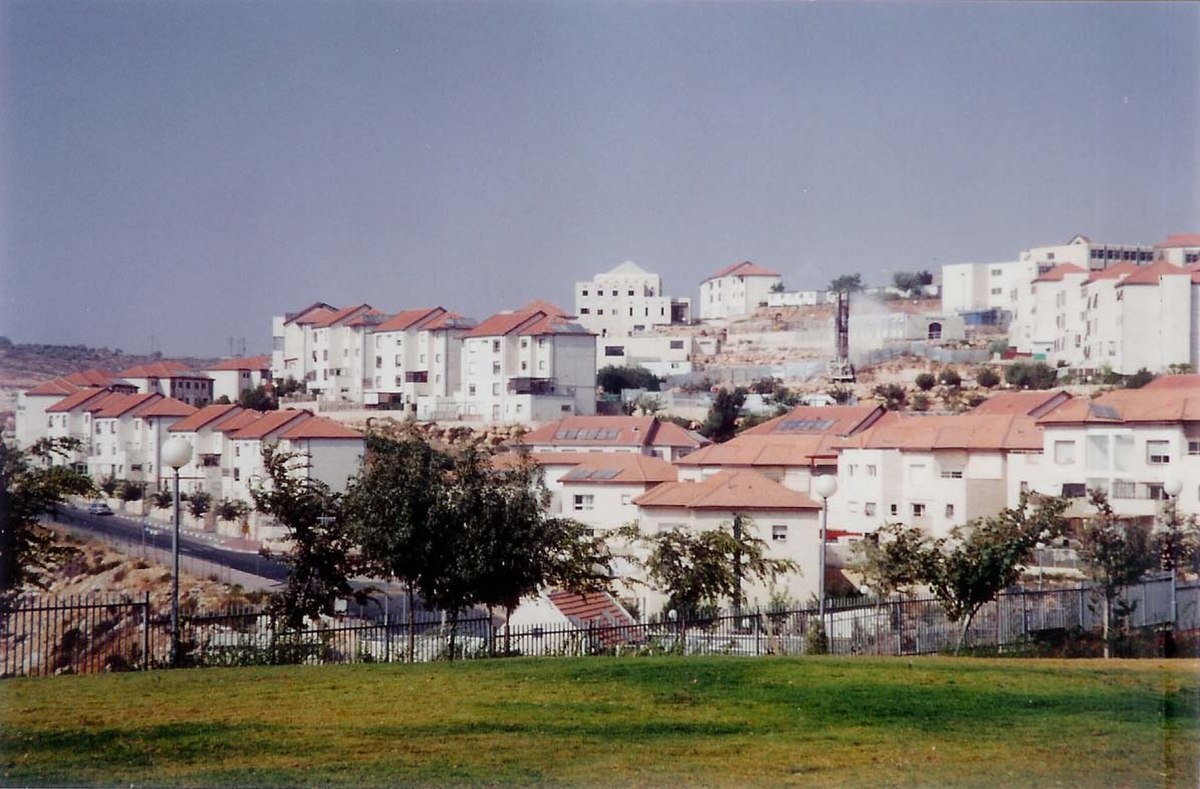
Israeli Settlements
West BankIsraeli settlements or colonies[267] are civilian communities where Israeli citizens live, almost exclusively of Jewish identity or ethnicity,[268] built on lands occupied by Israel since the Six-Day War in 1967.[269] Following the 1967 Six-Day War, Israel occupied a number of territories.[270] It took over the remainder of the Palestinian Mandate territories of the West Bank including East Jerusalem, from Jordan which had controlled the territories since the 1948 Arab-Israeli war, and the Gaza Strip from Egypt, which had held Gaza under occupation since 1949. From Egypt, it also captured the Sinai Peninsula and from Syria it captured most of the Golan Heights, which since 1981 has been administered under the Golan Heights Law.
As early as September 1967, Israeli settlement policy was progressively encouraged by the Labor government of Levi Eshkol. The basis for Israeli settlement in the West Bank became the Allon Plan,[271] named after its inventor Yigal Allon. It implied Israeli annexation of major parts of the Israeli-occupied territories, especially East Jerusalem, Gush Etzion and the Jordan Valley.[272] The settlement policy of the government of Yitzhak Rabin was also derived from the Allon Plan.[273]
The first settlement was Kfar Etzion, in the southern West Bank,[271] although that location was outside the Allon Plan. Many settlements began as Nahal settlements. They were established as military outposts and later expanded and populated with civilian inhabitants. According to a secret document dating to 1970, obtained by Haaretz, the settlement of Kiryat Arba was established by confiscating land by military order and falsely representing the project as being strictly for military use while in reality, Kiryat Arba was planned for settler use. The method of confiscating land by military order for establishing civilian settlements was an open secret in Israel throughout the 1970s, but publication of the information was suppressed by the military censor.[274] In the 1970s, Israel's methods for seizing Palestinian land to establish settlements included requisitioning for ostensibly military purposes and spraying of land with poison.[275]
The Likud government of Menahem Begin, from 1977, was more supportive to settlement in other parts of the West Bank, by organizations like Gush Emunim and the Jewish Agency/World Zionist Organization, and intensified the settlement activities.[273] In a government statement, Likud declared that the entire historic Land of Israel is the inalienable heritage of the Jewish people and that no part of the West Bank should be handed over to foreign rule.[276] Ariel Sharon declared in the same year (1977) that there was a plan to settle 2 million Jews in the West Bank by 2000.[278] The government abrogated the prohibition from purchasing occupied land by Israelis; the "Drobles Plan", a plan for large-scale settlement in the West Bank meant to prevent a Palestinian state under the pretext of security became the framework for its policy.[279] The "Drobles Plan" from the World Zionist Organization, dated October 1978 and named "Master Plan for the Development of Settlements in Judea and Samaria, 1979–1983", was written by the Jewish Agency director and former Knesset member Matityahu Drobles. In January 1981, the government adopted a follow-up plan from Drobles, dated September 1980 and named "The current state of the settlements in Judea and Samaria", with more details about settlement strategy and policy.[280]
The international community considers Israeli settlements to be illegal under international law,[281] though Israel disputes this.[282]
